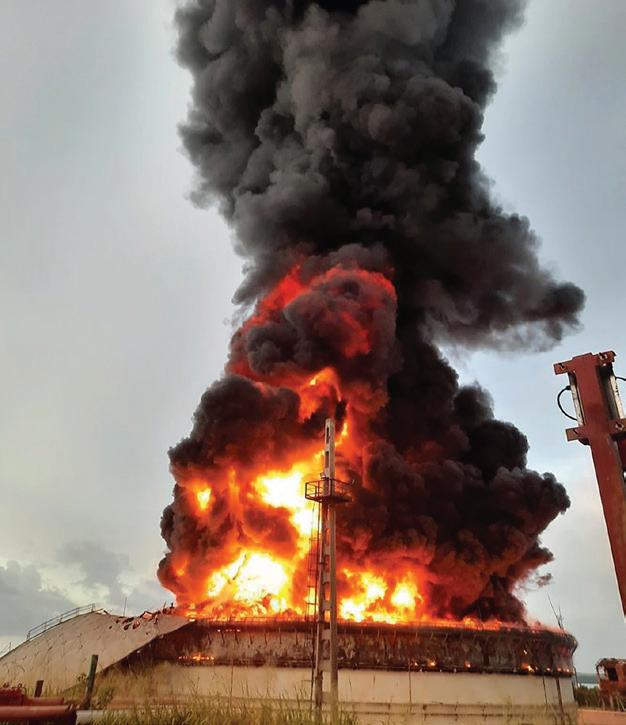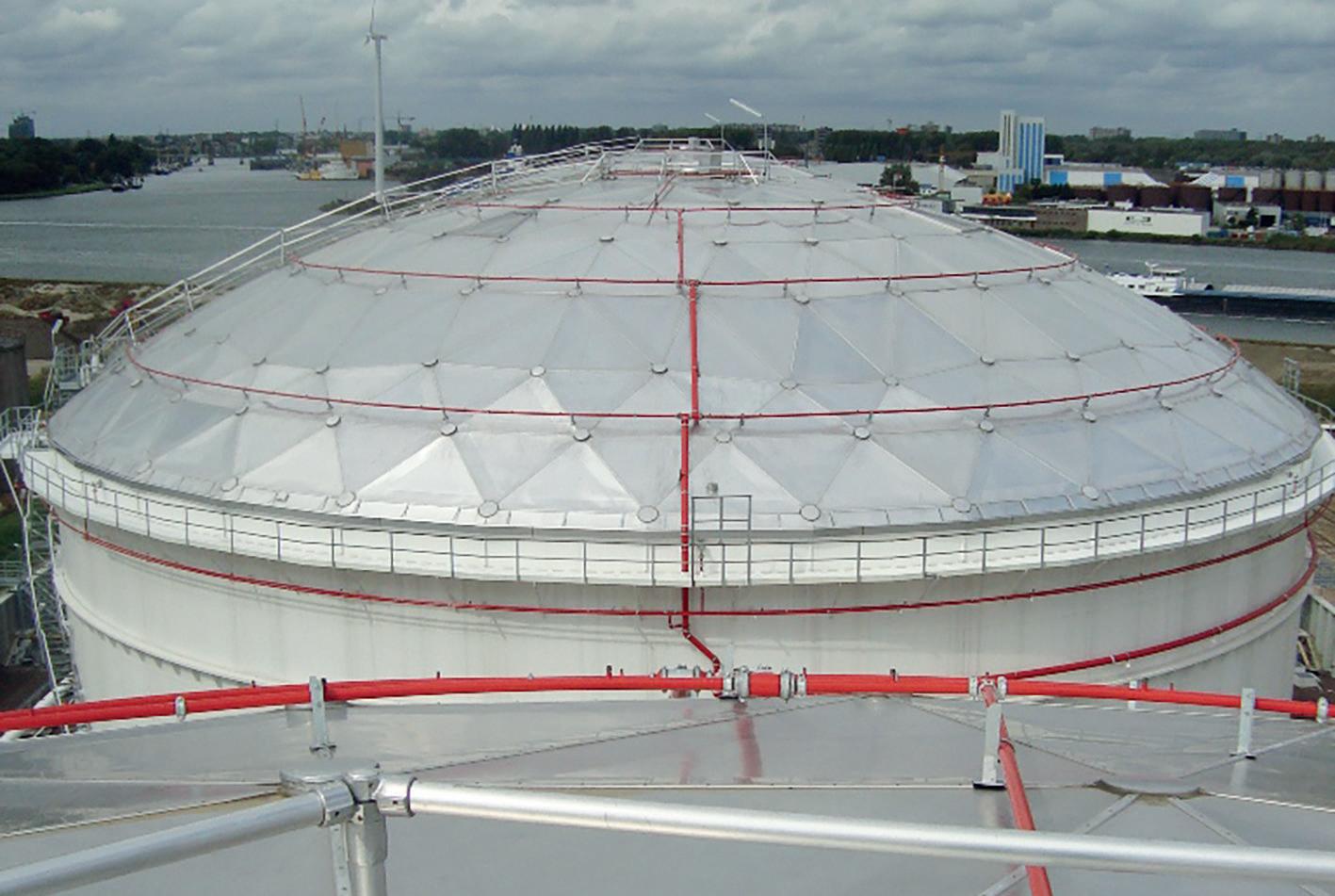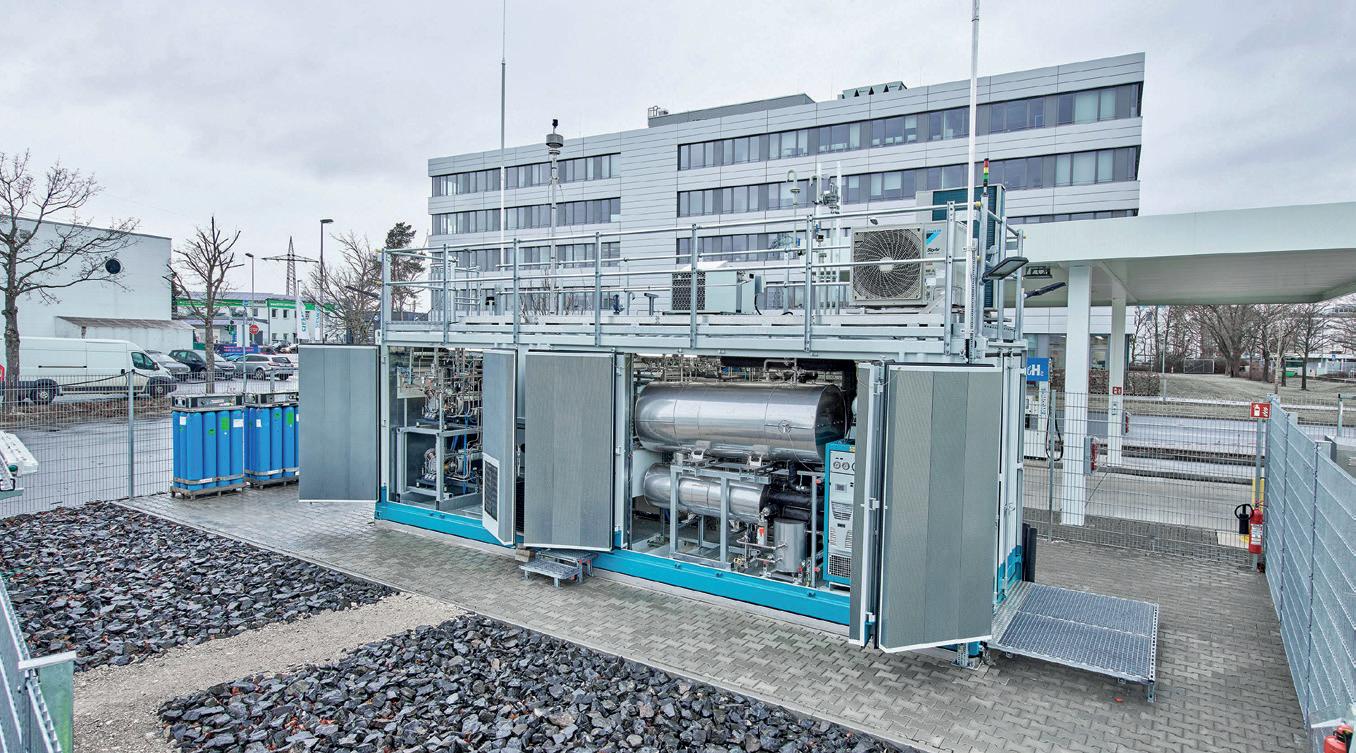
8 minute read
Lessons to be learned
CTS Group’s Gert van Meijeren shares his preliminary observations from the fire at Cuba’s main oil terminal in Matanzas
THE RECENT tragic tank fire at
Advertisement
Matanzas, Cuba, has attracted a lot of attention. 16 firefighters lost their lives and four large hydrocarbon tanks were destroyed in the blaze. The incident generated many public comments, but very few address the initial full-surface fire incident and the following fire response efforts. Also, many comments ignore the fact that the incident started in a tank that immediately had a full-surface fire; clearly storing a product above its flash point. At the time of writing this piece, there was no access to complete or accurate tank configuration data or incident data for the incident involved. As such, the following article is restricted by data in the public domain. For example, it is not known whether the initial tank had a floating roof or a nitrogen blanket. A full and detailed professional investigation will be of great importance to allow the industry to learn from this incident. However, terminal operators and professionals should develop a better understanding of how to safely operate atmospheric storage tanks, and how to define and mitigate an atmospheric storage tank fire, reducing the risk of escalating such an incident.
FIRE AND EXPLOSION SAFETY: THE TRIANGLE
A fire or explosion requires three conditions: • Combustible vapour concentrations • Presence of oxygen • An ignition source This article will consider these factors alongside the following incident-related aspects: • Frangible roof behaviour • Initial incident response • Escalation of full-surface fire incident
COMBUSTIBLE VAPOUR
For combustible vapours to be present, a product has to be stored above its flash point. In that respect, terminal operators should realise that a small portion of light product fractions could develop into a combustible vapour presence above the liquid product. On floating roof tanks (FRTs), whether external or internal, the presence of combustible vapours depend on the quality and design of the floating roof, as well as the degree of venting and ambient conditions. The higher the ambient temperatures the more likely a combustible vapour presence will be able to form above the liquid surface. These vapours are often considered to be heavier than air and to collect at a lower level. However, OGI studies show that a vapour column will migrate up due to thermal effects, and towards air volumes with a lower degree of vapour saturation. Extensive field measurements for full contact floating roofs have shown that these usually do not allow explosive or combustible vapour mixtures to form above the floating roof.
PRESENCE OF OXYGEN
Oxygen will always be present in any vapour volume unless the volume is inert – for instance by nitrogen displacing the oxygen. So, unless a tank is nitrogen blanketed, this corner of the triangle will be present.
IGNITION SOURCE: LIGHTNING STRIKES
There are many ignition sources other than lightning; and terminal operators will be well aware of these. However, it has been reported the Matanzas tank fire incident started with a lightning strike on the initial tank that caught fire. On a global scale, many serious tank fires and explosion incidents start with a lightning strike hitting storage tank facilities. As such, it is extremely important to understand lightning mechanisms and related risks, and options to mitigate these risks posed by lightning strikes on storage tanks. Few people realise that the tallest objects in a storm don’t always get struck by lightning. It’s true that taller objects are closer to the clouds, but lightning can strike the ground or any other surface at a close distance to a tall object. Taller objects may have a higher possibility of a strike, but where lightning is concerned, the strike path is not predictable. As such, lightning can result in sparking or a hot spot, and these ignition sources can

01
02
occur at any part of a storage tank. This is addressed in EN 1127-1 2007 as follows: ‘If lightning strikes in an explosive atmosphere, ignition will always occur. Moreover, there is also a possibility of ignition due to the high temperature reached by lightning conductors. Large currents flow from where the lightning strikes and these currents can produce sparks in the vicinity of the point of impact. Even in the absences of lightning strikes, thunderstorms can cause high induced voltages in equipment, protective systems and components.’ Terminal operators should make sure they minimise safety risks on the above basis, and also ensure the facility is prepared to deal with the potential incidents that could be the result of lightning striking any of their storage tanks.
MAIN FIRE SCENARIOS
When reviewing the fire risks of atmospheric storage tanks there are two fire mechanisms to be addressed, as follows: • A rim fire (typically reviewed for a floating roof tank) • A full surface fire (for any tank type, subject to product stored).
Rim fire:
In a rim fire, the fire is limited to the area between the floating roof and the tank shell. Any fire is to be considered a major incident, but a rim fire is much easier to extinguish, as the surface that’s on fire is limited. However, letting a rim fire continue could still introduce various escalations resulting in serious concerns on the safety and integrity of the tank, the tank farm and its surroundings.
Full surface fire:
A full surface fire is much more serious, as the full surface of a tank is on fire, representing a much higher heat flux. As such this kind of incident will be much more difficult to deal with. Moreover, the impact on both the tank as well as the immediate environment of a tank farm is much more severe when compared to a rim-fire. A full surface fire can be the result of several causes, such as: • Storing product (fractions) above its flash point in tanks not being equipped with a floating roof or being nitrogen blanketed • Extensive amount of product or combustible vapours being present on top of a floating roof • A damaged floating roof, for instance, resulting in a (partially) sunken roof
FRANGIBLE ROOF BEHAVIOUR
The Matanzas incident started with a vapour phase explosion under an aluminium dome roof (see image 02). The roof behaved as it should under the design codes – as a frangible roof, blowing off. This keeps the tank shell intact and the stored liquid inside the tank, limiting the scale of the initial incident. Amongst others, API 650 (American Petroleum Institute) provides design criteria for storage tanks used to store flammable liquids. To prevent tank shell or tank bottom failure and the spill of product from the tank, the rules in API 650 are intended to ensure that the frangible roof-to-shell joint fails before failure occurs in the tank shell or the shellto-bottom joint. Failure of the frangible roof-to-shell joint provides a large vent area releasing the pressure in the tank, and it will keep the product inside the tank and reduce the chances of any further incident escalation within a tank farm as the (likely ignited) product remains within an intact tank shell.
PROPER INCIDENT RESPONSE
The proper configuration for the fire detection, firefighting and tank cooling facilities on these tanks would have been the following: • Proper fire detection systems to be in-service (infrared fire detection on tanks without a floating roof or with a non-contact floating roof and allowing a full-surface fire, fire detection cable fitted in the rim area for tanks that would have a floating roof configured for a rim fire per NFPA 11) • Foam injection infrastructure to allow foam entering the tank without having to enter the bund wall • Adequate mobile adjacent tank cooling infrastructure or fixed tank cooling facilities (see image 01) to be installed on all tanks if incident heat contours require so, to allow tank roof and tank shell cooling in case of an incident, as to ensure incident will not escalate • Infrared cameras to allow the temperature of the tank contents to be monitored in case of a tank fire
ESCALATION BEYOND A FULL-SURFACE INCIDENT
After fighting the full-surface fire for some time, the incident in Matanzas escalated dramatically, showing all characteristics of a boil-over. The initial full-surface fire escalated and it could be that the tank lost its burning liquid contents all together, trapping the firefighters inside the bund wall area and engulfing the adjacent tank. As quite a number of firefighting staff were present in the bund wall area, engaged with cooling adjacent tanks and fighting the fire, many of them lost their lives in this tragic escalation.
HOW TO KEEP TANKS SAFE
In general ensuring proper storage tank safety and integrity in any case, including cases where lightning can strike, requires the following: • Regularly inspect your tanks and floating roofs • Minimise ignition and explosion risks, and do not store products with a flash point near or below ambient temperatures without taking appropriate measures to ensure vapour space is below 10% LEL (Lower Explosion Level) • Make sure fire and/or explosion scenarios for vapour space present have been reviewed and addressed in emergency response scenarios • Be prepared to deal with a fire or explosion scenario, make sure your tanks have frangible roofs, and adequate and immediate response efforts are defined and available (i.e. will you require foam solution, water, pumps, etc) and firefighting systems to be up to the task, having been regularly tested • Review escalation risks associated with fire or explosion occurring, and review heat contours to mitigate incident development through the facility while also reviewing firefighting foam and water run-off in the facility • Make sure emergency responders are prepared for their tasks, and are adequately trained and equipped to deal with an emergency situation being the result of lightning impact, preferably allowing them to respond without having to be physically present near the tanks involved and within the bund wall area
For more information:
CTS Group is a leading global solutions provider specialising in tank storage. www.cts.global
01 Sprinkler lines on aluminium dome roof tanks 02 Frangible aluminium dome roof blown off by an explosion










